Zephyranthes
Zephyranthes is a perennial bulbous plant belonging to the amaryllis family. The genus comprises about 40 plant species, with its origin in the tropics of Central America.
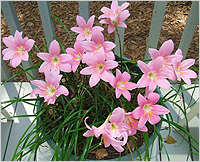
In their natural habitat, these flowers emerge with the onset of the rainy season, earning them the names "Rain Lily" or "Rainflower" on the American continent.
The leaves of the Rain Lily are narrow, and the plant itself is relatively small. Its charm lies in the star-shaped flowers on slender stems, which can be white, yellow, or pink, with some being bicolored. The flowers remain open for a short duration, typically just a week.
Rain Lilies bloom throughout the year. While different species may have distinct flowering periods, in indoor cultivation, Zephyranthes can produce flowering stems at any time. If left unwatered for a period, such as during a vacation, and then watered again, the plant might interpret it as spring and surprise with flowering stems. The stem emerges above the surface, reaching its full size and blooming within a day.
The Rain Lily is valued for its undemanding nature and its ability to unexpectedly delight with delicate flowers. It can thrive and bloom in winter in cool indoor spaces, such as heated verandas, stairwells, or holl.
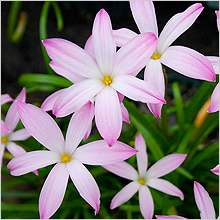

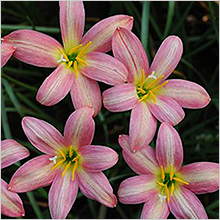
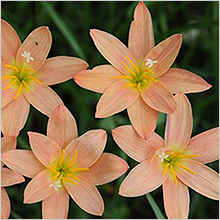
Care Tips for Zephyranthes:
- Light: Zephyranthes is a light-loving plant, thriving well on south, west, and east-facing windows. It can tolerate north-facing windows but may not flower as prolifically. During summer, it can be placed on balconies or planted in open ground.
- Temperature: Maintain regular room temperature. During the rest period, it's beneficial to keep the plant in a cool place at 10-15°C, although it's not mandatory. Zephyranthes does well in cooler environments.
- Humidity: Air humidity is not critical.
- Water: Keep the soil slightly moist but not wet. If the Rain Lily loses all its leaves during the rest period, refrain from watering. If growth has stopped but leaves are still present, water occasionally.
- Fertilizer: Feed Zephyranthes with liquid flowering plant fertilizer every two weeks during the growth and flowering period.
- Soil: Zephyranthes is not picky about soil; almost any well-draining mixture will suffice. A light, nutritious blend of leafy and loamy soil with added sand and peat is recommended.
- Repotting: Repot Zephyranthes annually or every one to two years. Choose a shallow pot, plant several bulbs, burying them entirely so only the necks are above the surface. This is typically done in autumn but can be done after flowering.
- Rest Period: Like Hippeastrum, Zephyranthes requires a rest period for flowering. Typically in autumn, the plant ceases growth, loses its leaves, and during this time, reduce watering. If all leaves are lost during the rest period, cease watering. If leaves are present, watering once a month may be sufficient.

Propagation of Zephyranthes: Zephyranthes is usually propagated through offsets or bulbils, with the main method being separation during repotting. They can flower in the same year they are separated.
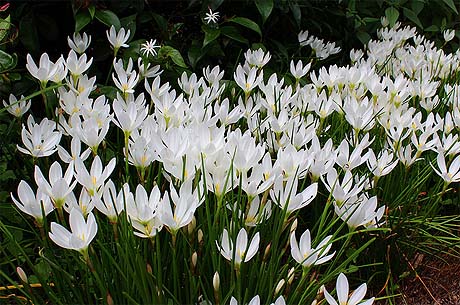
Diseases and Pests: Common issues include infestation by amaryllis worm, scale insects, and spider mites. Combat them with a 0.15% solution of actelic, or alternatives like carbophos or decisis. Spider mites may appear in excessively dry air.
Note: The information provided is for general guidance, and specific conditions may vary. Always adjust care based on the plant's response and individual circumstances.




